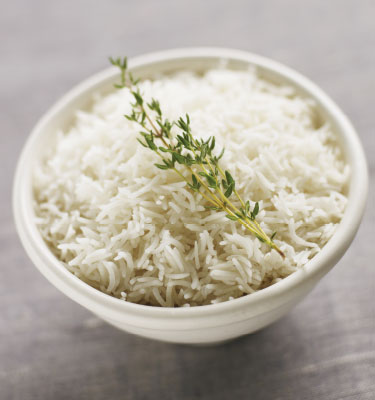Bulk spotlight: white rice
This article was originally published in May 2015

Whether you prefer fluffy pilaf or creamy risotto, it’s a rare individual who doesn’t have a favorite recipe for rice. While some characteristics of short- and long-grain rice are immediately visible, the real reason they cook differently is based on their starches, not their looks.
Amylose is a starch that softens but doesn’t get sticky; all types of long-grain rice are about one-quarter amylose and it helps them cook into separate, fluffy grains. The second type of starch is amylopectin, and it plays a very different role in the cooking process by making rice sticky. It’s no surprise that it’s found in larger amounts in short-grain types like Italian Arborio and Japanese sushi rice. It’s this starch that develops slowly when cooking risotto and makes it so creamy; it’s also why sushi rice clings so easily to itself.
This simple difference is why you can substitute different long-grain rice types with good success in recipes, and get acceptable results swapping short-grain varieties. But, substituting short-grain in a recipe that calls for long-grain — like our Lemon-Rosemary Rice — will likely yield poor results. As the name implies, Jasmine has a delicate floral fragrance; Basmati’s is rich and nutty. Simple long-grain rice and most short-grain types are considered neutral, with a faint, almost buttery, aroma.
Five types to try

Recipe ideas
- Jasmine: Lemon-Rosemary Rice
- Basmati: Tadeg
- Long Grain: Caribbean Coconut Rice
- Arborio: Mushroom Risotto
- Sushi: Portuguese Sweet Rice
We’ve matched each type of rice with an ideal recipe. Check them out >>
